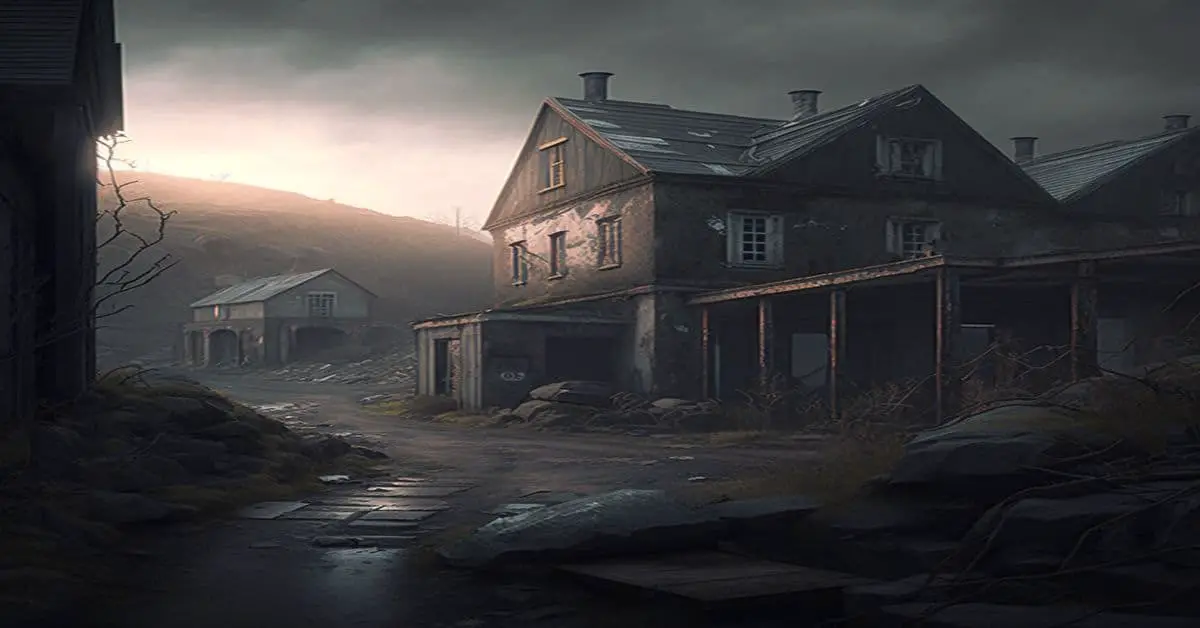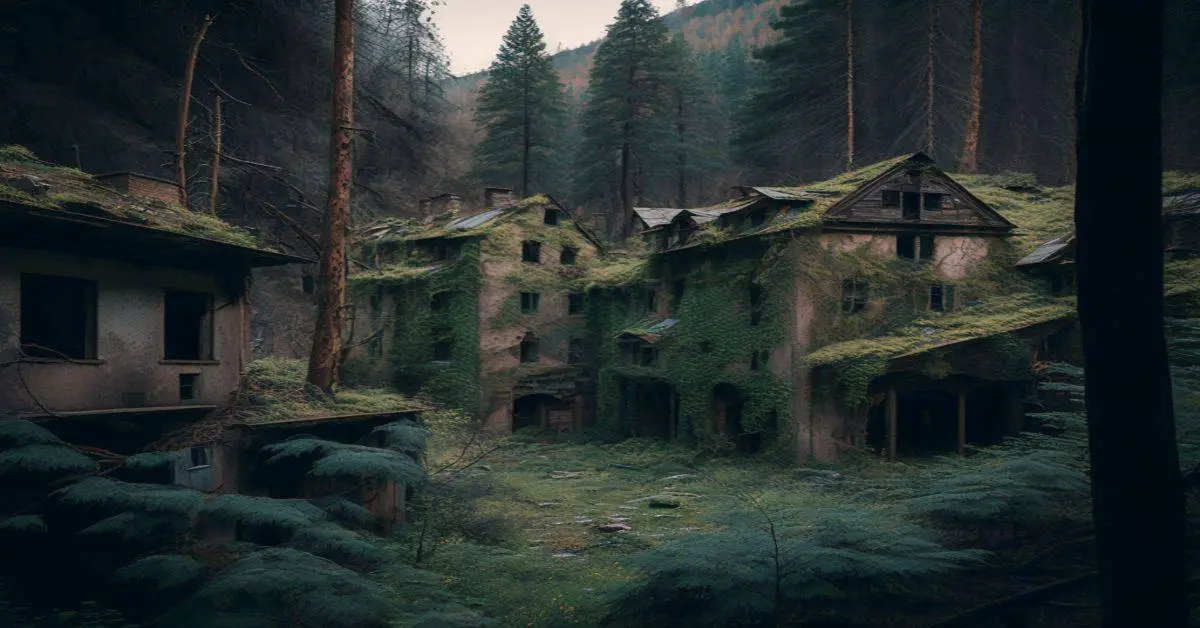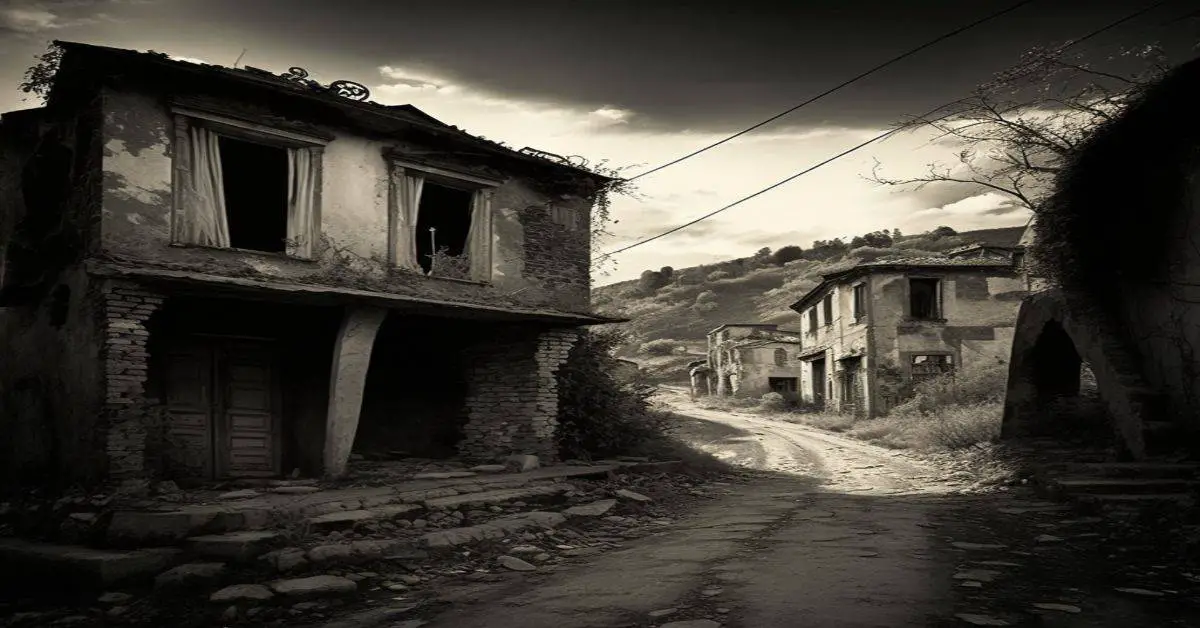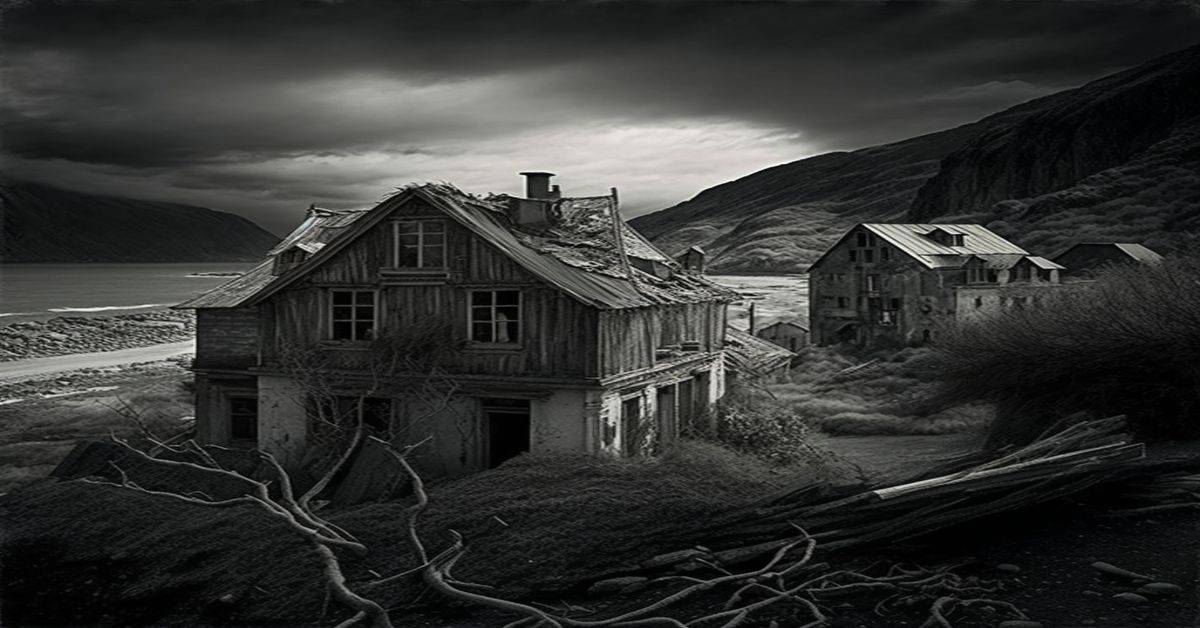The abandoned cities of America are terrifying. These ghost towns, once prosperous mining villages, stretch throughout the country. It’s not hard to see why they’re so eerily quiet. Most were never touched after their golden days as a bustling town of people hoping for wealth from gold or silver.
America is a land of mystery and intrigue, with its old ghost towns scattered across the country. Pennsylvania has several places that are said to be haunted by spirits from yesteryear. Some examples include legends like garlic valley (where people went after death) or Dover castle – which was once home for civil war prisoners before being converted into a military prison later on during WW II.
The best ghost towns in America are an eclectic mix of beautiful and macabre. Some offer an exquisite dining experience, while others had preserved architecture from when they were bustling population centers with hotels to accommodate travelers coming through on their way elsewhere. These days, there’s no hurry because everything has its place.
Calico, California
You’ll never forget your first trip to Calico Ghost Town. It’s a one-of-a-kind attraction where you can experience the thrill of exploring an authentic ghost town while learning about its history as part of California’s mining legacy (and how it once served Maggie Mine!).
You won’t find any silver or gold here, but there are plenty of activities for visitors who want more than just nostalgia. -Rides on Odessa Railroad cars are popular, so visitors can see all angles from above. Another well-known attraction is participating in guided tours around certain areas, which provide terrifying stories told directly by former residents.
Rhyolite, Nevada
People usually associate it with Las Vegas and its famous casinos when they think of Nevada. But there is another side to this state that has been largely overlooked: The mining towns along the eastern edge like Rhyolite, where you can find abandoned buildings from yesteryear, such as a hospital or opera house – just waiting for someone’s next adventure!
There are many reasons why these places fade away. Some say natural disasters were responsible, while others note financial scandals involving Charles M Schwab, who bought one mine in 1906. Not long after the purchase, Schwab realized the investment disaster he had caused when nearly everyone else left due to fears over their job security as the economic struggles throughout America grew.
Goldfield, Arizona
Goldfield was a hotbed for miners in the late 1800s, but by 1998 it had dried up. The area became known as Youngberg around 1921. The town remained inhabited until 1926, when all buildings were abandoned. In 1988 this ghost town took on some other characteristics like zip lines, reptile exhibits, and horseback rides made possible through tourism which has become increasingly popular since World War II.
St. Elmo, Colorado
The city of St Elmo is a privately owned former mining center that has seen better days. Once home to 2 thousand people, only seven remained by 1930, including the family who ran the general store and hotel–a resident’s rumored hauntings stay today.
The small town’s ghostly tales were enough reason for some locals to move on while others stuck around; nowadays, you can visit these sites if you want even more scary stories from your vacation.
Terlingua, Texas
The ghost town of Terlingua is a bustling tourist attraction. Visitors can enjoy chili at the “internationally acclaimed” restaurant and grab drinks in saloons or jailhouses. At the same time, they explore what remains from this once-thriving mining town’s past–including ruins that will leave them speechless.
Virginia City and Nevada City, Montana
Virginia City is a town in the Old West that has been preserved throughout its history. A former mining community and home to Calamity Jane when it was still just an unincorporated territory with no government presence whatsoever – not even electricity!
You can visit many historic buildings from this time if you take one mile down Alder Gulch Road, where dozens more structures can be seen that date back as far as 1849-50.
The Gold Rush town of Breckenridge is a living museum. With its bustling downtown and historic train station, you can ride the Train between two worlds as it takes passengers back to their frontier days when settlers were trying to grow enough food for themselves in this harsh environment.
Bodie, California
Abandoned by gold rushers who followed William Bodie to the town, this ghostly settlement has remained untouched for more than 150 years. Shacks with tables set and waiting patiently hold pieces of history missing from many lives.
Abandoned property deeds show whose land was once theirs; old photographs remind us what life looked like here before it disappeared forever under dunes or baking suns alike. But if you dare walk through these ruins today, take note: there may be someone or something nearby from which we could learn something new.
Cahawba, Alabama
This picturesque town at the confluence of two rivers was once a bustling center for cotton trading and transportation before it became Alabama’s first permanent capital from 1820 to 1825. After being destroyed by fire in 1932, this weary ghost town made an unlikely comeback as residents rebuilt their homes on higher ground away from riverbanks which were increasingly prone to flooding following significant hurricanes.
Old Cahawba was once a bustling community with many people living in its streets. However, by 1900 all but one inhabitant had left for good. Now only ghosts remain to tell the stories about this city. One such ghost story involves an orb appearing behind a home, which is said to be evidence proving there are still some lingering spirits around after 100 years!
Kennecott, Alaska
The remains of an old copper mining town in the middle of an Alaskan national park are now a popular tourist destination. Kennecott Copper Company founded the mill village as technological advances made construction more accessible than ever before; this allowed employees at lower costs while still producing high volumes with fewer on-site workers.
The historic Sweeney Point General Store offers visitors basic needs like food, toilet paper, or other camping equipment if they plan their outdoor adventure around Sitessee Lake.
The abandoned town of Kennecott is one among many remote places in America that tell stories about the fortune and fate of its inhabitants. When mining companies arrived to tap out copper ore around the 1900s, they found it had been depleted – but not without leaving behind their equipment and buildings, which now stand as silent reminders of what once was here. Guides can take you through a 14-story concentration mill where workers process raw metallic rupture material into usable products.
Bannack, Montana
The town of Bannack in Montana is so riddled with paranormal activity that it was featured on an episode of the Travel Channel’s Ghost Adventures. Founded when gold was first discovered in 1864, this former mining center has seen plenty over its 180-year history, including The Great Depression, becoming a hub for ghost-hunting enthusiasts, and was once home to one of the most notorious covered-up criminal organizations in American history.
The mining community lasted longer than most, with its population, finally petering out between 1930 and 1950. State legislation made it an official State Park preserving all that remains—over sixty structures waiting for you to explore them.
South Pass City, Wyoming
When the large Carissa gold deposit was discovered near South Pass City in 1867, it quickly became a thriving mining town with many prospectors descending on this new and exciting discovery. Located at an altitude over 10 thousand feet above sea level and along the highway linking Oregon to Wyoming across parts of two states – Montana and Idaho- these conquerors faced some severe conditions.
Still, they were hopeful that they would soon strike rich themselves when panning for minerals or working their way through rugged mountainsides picking apart rock until finally finding valuable pieces underneath.
In 1868, only 100 people remained – primarily men who had come looking for profit or adventure like before – despite the backbreaking hours at work within just one year alone! No large gold deposits could be seen anywhere, so by the mid-1870s, only ten years later, not even half remained.
Homes, stores, hotels, pubs, and saloons fell into disrepair. Today, a handful of residents have returned to live in South Pass City, and the South Pass City State Historic Site features more than 30 preserved historic structures dating from the city’s heyday.
Centralia, Pennsylvania
With smoke and toxic gases escaping from every nook and cranny, this Pennsylvania town has been smoking since 1962—and its underground fire is expected to burn for 250 more years. A landfill burns awry sparked the fire in an abandoned coal mine, which quickly spread into the veins of the coal deposits that had once been the key to Centralia’s prosperity.
When the initial damage was done, the catastrophe had scorched 140 acres of the town and the surrounding area. Residents evacuated, homes were leveled, and the highway was closed down as the massive fire caused gaping sinkholes spewing fumes.
Of the nearly 2,000 Centralia residents who were there when the mines caught fire, only six remain, determined to make the few streets and buildings in this doomed town their home until they die.
Thurmond, West Virginia
Thurmond, West Virginia, is a ghost town that once thrived due to its connection with the Chesapeake & Ohio Railway. The invention of diesel Locomotives in the 1950s rendered this coal run obsolete and caused population numbers to drop drastically until only one resident remained.
Thurmond is a town of the past and still manages to keep that old-fashioned charm. The train depot has been turned into an interactive museum.
Glenrio, Texas/New Mexico
The town of Glenrio, Texas, has also seen many changes in its history. In the 70s, the popular small oasis’s purpose changed overnight when construction began on the new highway between Mexico City and Los Angeles. Though the motel and gas stations were there for travelers during Route 66 years ago, they are now bypassed by I-40.
The old Route 66 roadbed and 17 abandoned buildings in the historic district of Glenrio make up a fascinating look into America’s past. These landmarks include such historical markers as the Little Juarez Diner, and State Line bar & Motel with broken signs advertising that it is “last stop” or “first,” depending on which direction you’re going through Texas.
The structures date back to various eras, including Prohibition, when they served as rest stops for travelers along this famous highway.
Bulowville, Florida
When the Seminole Indians set fire to East Florida’s largest sugar mill in 1836 during The Second Seminole War, it quickly became apparent how vulnerable this area would be if ever attacked again.
Charles Bulow had cleared the original forest sometime before 1821 for his 2200-acre plantation, which grew cane crops and other products like cotton and indigo. His son John built a powerhouse at what is now known today as “Bulow’s Forge” upon completion of construction on an earlier version found nearby that year.
The Bulow Plantation Ruins Historic State Park is a 150-acre property with ruins that date back to Spanish Florida’s colonial period. The massive stone structures now rise eerily among large oak trees, which have also reclaimed the land in their hugeness and volatility.
What is left serves as reminders of what once was before it all fell apart due to years of neglect spanning almost two centuries between 1763 when Spain ceded North America, including modern-day Mexico, where they had been settled from 1513 until 1821 following the Mexican War Of Aggression.
Essex County Jail Annex, North Caldwell, New Jersey
The abandoned Victorian-style Essex County Jail Annex in New Jersey is haunting, but the austere environment exudes an even creepier feeling. First built over one hundred years ago and expanded by adding various other facilities such as an auditorium, hospital, and cafeteria, much of this former prison has now been closed down due to being too old or unsafe.
The old abandoned prison is a perfect spot for thrill-seekers to explore. It’s been claimed as one of New Jersey’s most dangerous places thanks partly to the items which remain permanent fixture reminders – should you be judged guilty- there might justly await your fate here. A shotgun port on the ceiling lets anyone know they’re not safe, while mugshots cover every inch of ground inside this building!
Grossinger’s Catskill Resort, Liberty, New York
Grossinger’s Catskill Resort is a must for those looking to spend their summer vacations in the great outdoors. With its lush 1,200 acres and two massive swimming pools first opened up by famous actors decades ago as featured deities from “Dirty Dancing,” this resort offers everything you need.
Start lounging by one of these amenities or playing golf on gorgeous greens! You can also choose between tennis courts if football isn’t your thing; there are many more activities, like horseback riding through nature trails. In addition, they offer skiing during winter.
What secrets does this historic property hold? Some of the cabins, cottages, and other buildings that housed hundreds of thousands of guests until they closed in the mid-1980s remain. One building is a stately natatorium with gorgeous overgrown mosses and ferns on its windowsills while sunlight streams through them onto the old pool below.
Another unique spot has lobby space where twin staircases stand guard before a massive fireplace near the checkerboard ceiling, suggesting at least partial restoration has taken place here.
If you listen hard enough, you might still hear the tinkling of cocktail glasses or the clicks of heels dancing the foxtrot.
Rolling Acres Mall, Akron, Ohio
The Rolling Acres Mall is not only a landmark of the area but also one that has witnessed many changes over time. Built in 1975 and expanded several times, this mall once housed more than 140 stores with an IMAX theater!
In 2008, it was closed due to safety concerns which led most retailers to leave by 2009 with no hope for a site-wide reopening. Two large companies tried to hold on and remained open until 2013, when demolition was ordered to begin.
The 1,300,000-square-foot space remains an eerily empty relic of modern civilization. Its cracked glass ceilings let in snow during winter storms as if the structure stands alone in a post-apocalyptic wasteland.



